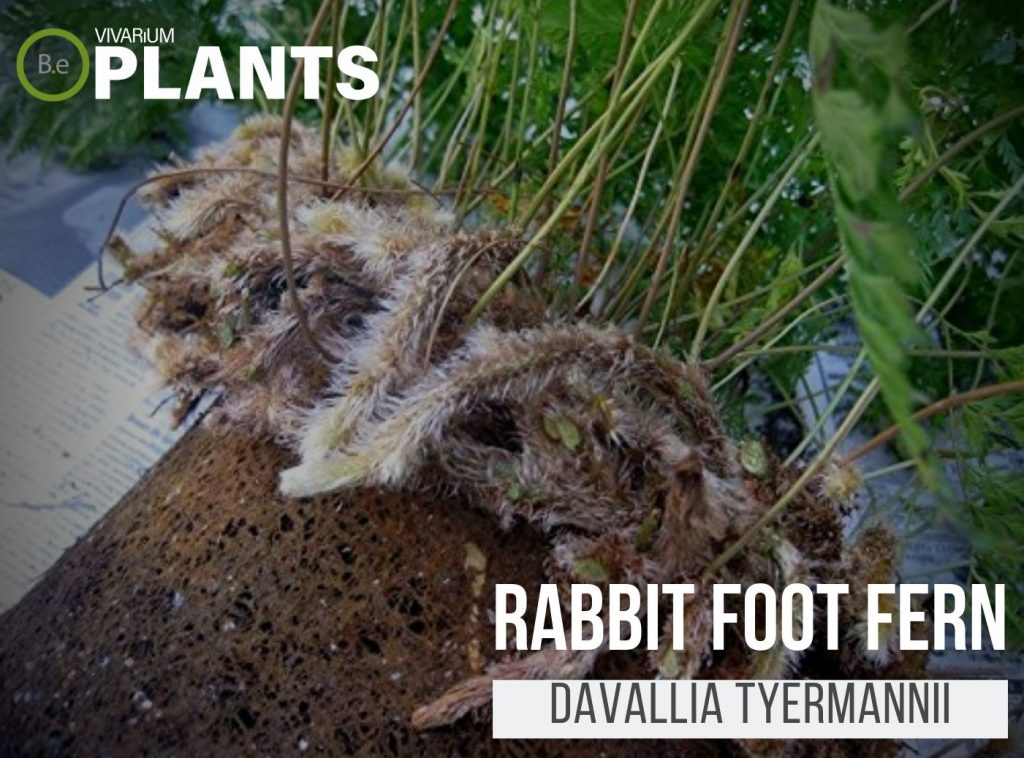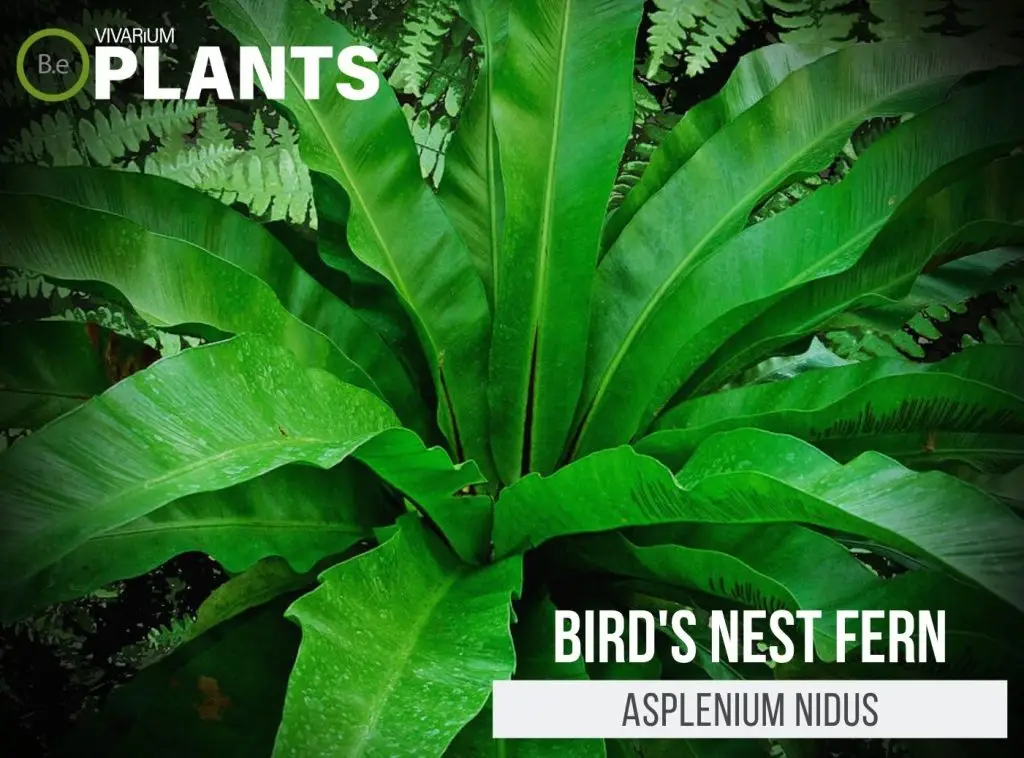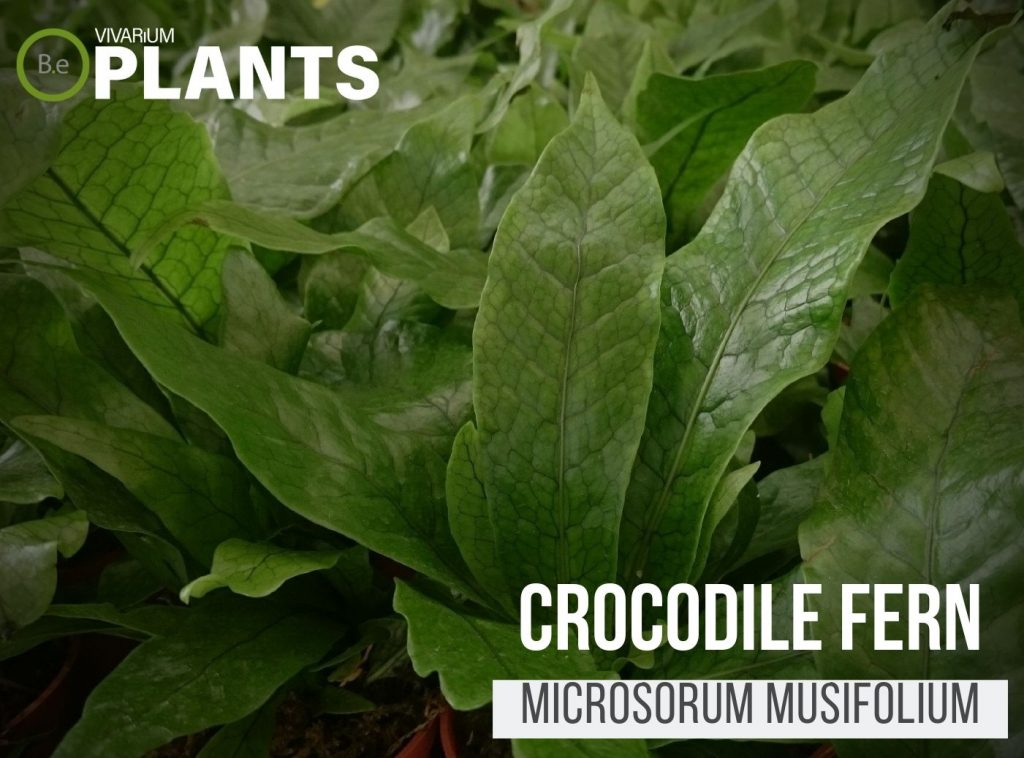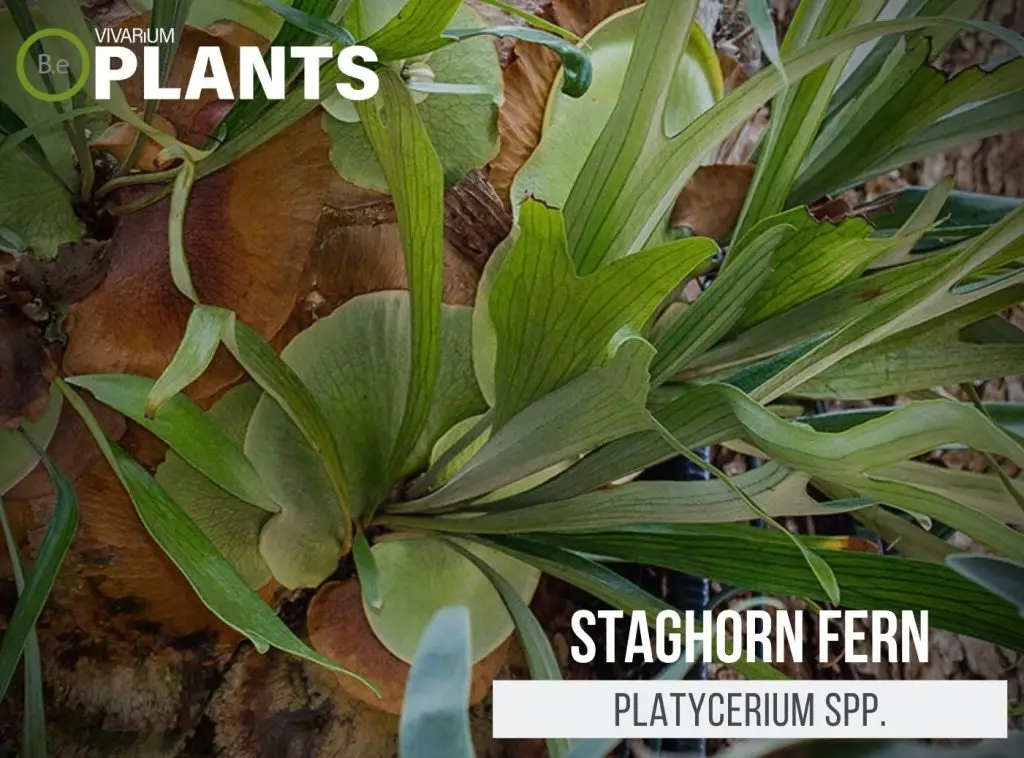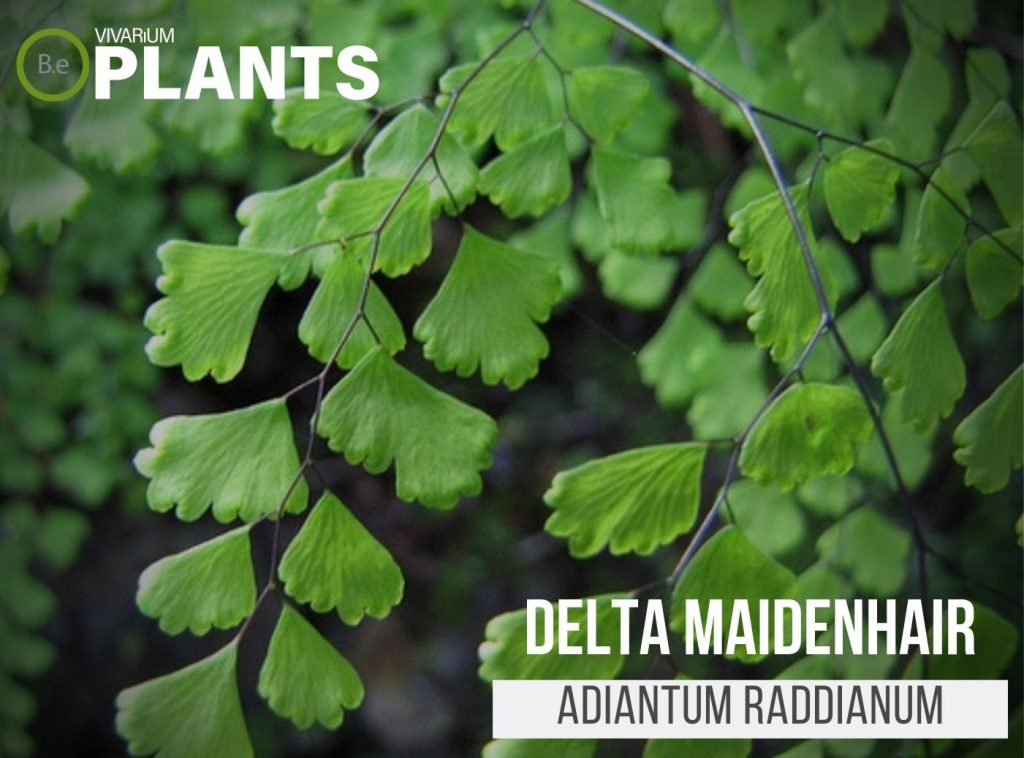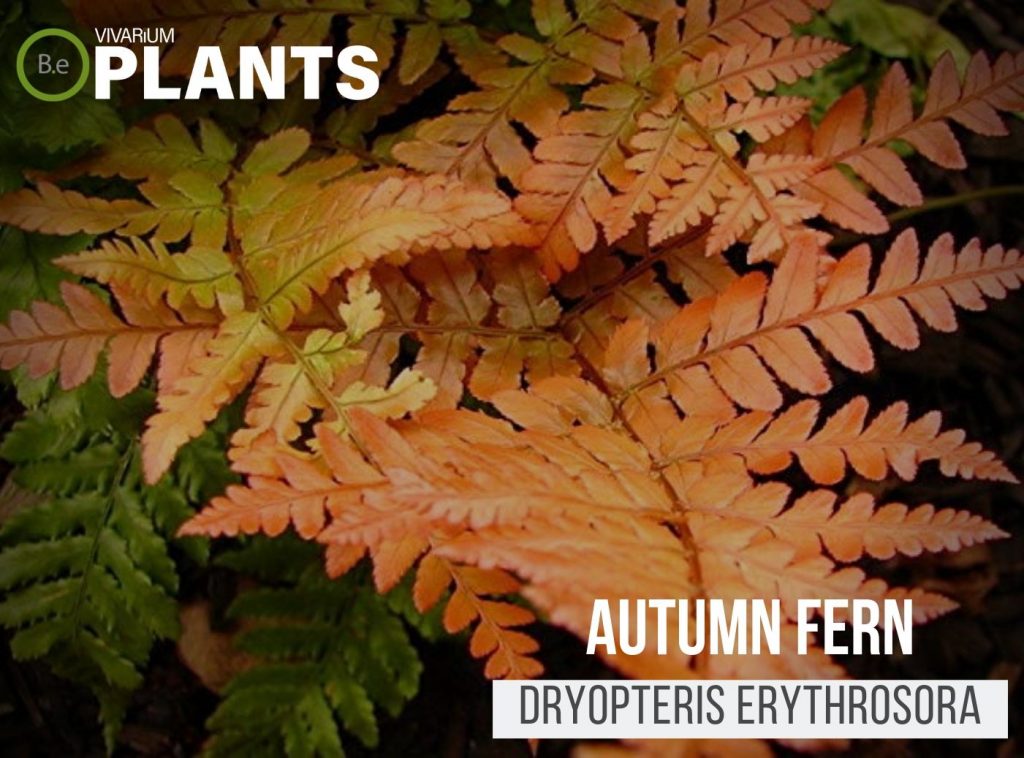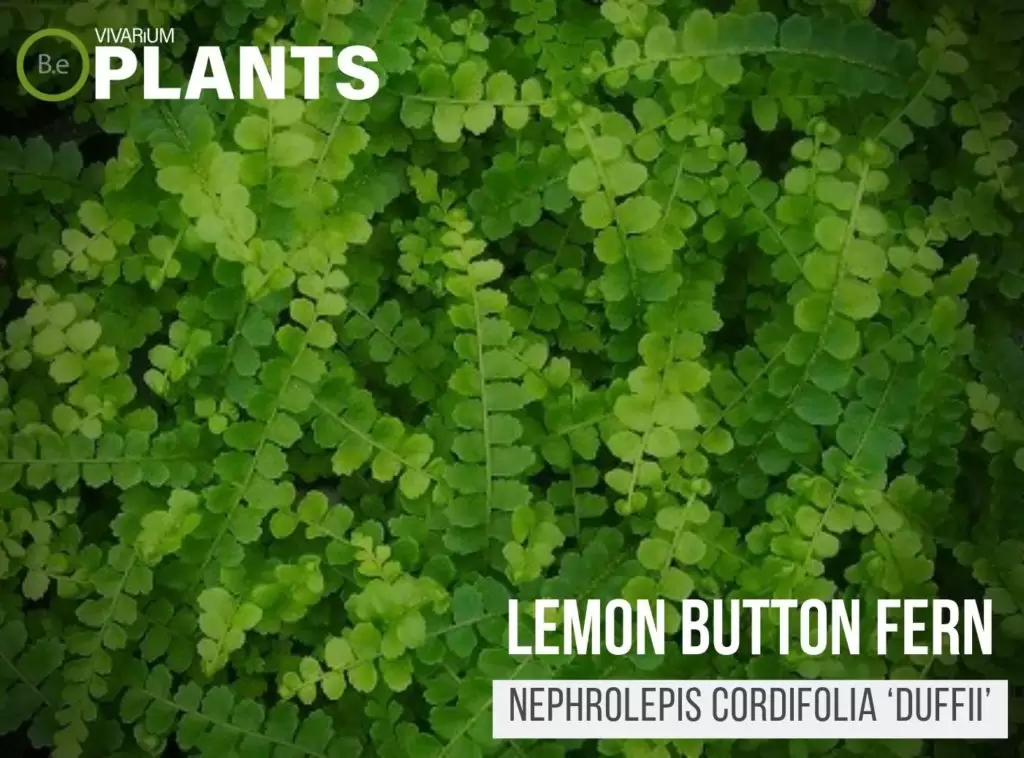Do you have an eye for nature, but don’t have the time or energy to tend to a garden?
Then miniature ferns may be the perfect addition to your home.
Terrarium ferns are miniature replicas of the lush, green natural environment, and they add an elegant and calming touch to any home.
Plus, they’re easy to care for and simple to design.
In this article, we’ll show you a number of fern types available, how to care for your terrestrial ferns, and some tips on how to design a beautiful fern terrarium setup.
With just a few simple steps, you can bring all the beauty of nature, while getting all the benefits of a low-maintenance houseplant.
Table Of Contents:
ToggleWhat Are Terrarium Ferns?
Terrarium ferns are a perfect way to bring a bit of nature and greenery into your home. These unique plants are ideal for a terrarium, a sealed glass container with the perfect environment for various ferns.
They can be easily maintained with minimal effort and take up very little space in your home. With the right care, these unique plants can last a lifetime.
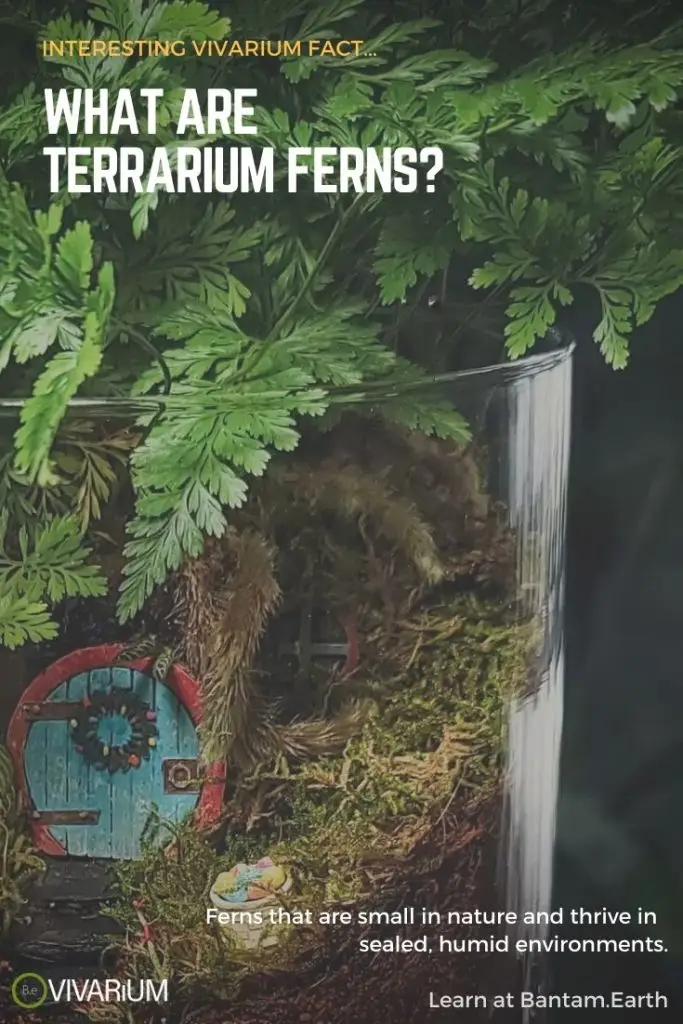

Terrarium ferns come in a variety of shapes and sizes, making it easy to choose one that fits your space and style.
They require minimal sunlight and water, so they are perfect for those who don’t have the time or energy to devote to the regular maintenance of plants.
In addition, terrarium ferns are known for their air-purifying properties and can have natural healing effects on the mind and body.
Terrarium-based ferns are also incredibly easy to care for.
By providing the right temperature, soil, and nutrients, you can keep your ferns healthy and living long.
They can even be repotted or propagated to increase the greenery in your home.
Why Should I Use It?
Terrarium ferns offer many benefits for those looking to bring a bit of nature into their home.
First and foremost, they don’t require much care and maintenance, making them the perfect choice for busy people.
They also provide natural air purification, creating a cleaner and healthier environment in your home.
In addition, ferns can reduce stress and anxiety thanks to their calming and soothing effects.
These types of plants are also known to improve indoor air quality.
They’re able to absorb toxins and purify the air, resulting in a cleaner and healthier environment.
Additionally, they can help to improve concentration and productivity.
With their calming presence, they make great additions to studies and work areas.
Finally, terrarium ferns can add texture, color, and character to any room.
They come in a variety of shapes, sizes, and colors, so it’s easy to choose one that suits your style and complements your existing décor.
The Growth Pattern
Terrarium ferns are a great way to bring a bit of nature into your home or workspace.
Though they come in many shapes and sizes, the type of fern you pick is determined by their root structure.
The three main types of ferns we will cover in this guide are air-layering, rhizome, and stolon.
Air-layering ferns are those that have roots that curl up and around, anchor themselves back into the soil, and grow in the shape of a decorative air layer.
These types are slow-growers but are very attractive and perfect if you want to add a bit of greenery with minimal effort.
Rhizome ferns have stems from which the roots grow and extend out from the soil surface.
These guys are epiphytic plants by nature. They are fast-growing and can quickly fill out an area with lush foliage.
Stolon ferns are the most common type of terrarium fern and can be further broken down into five types—Interrupted, Resurrection, Water, Waving, and Creeping.
These ferns grow horizontally and develop more fronds faster than the other types of ferns.
The Best Ferns For Terrariums
When it comes to terrarium ferns, there are a number of factors to consider before deciding on the right plants for any miniature ecosystem.
We have carefully curated a list of the best ferns for terrariums.
Browse it for inspiration and click on the image of ferns that you’d like to get more information about:
Rabbit Foot Fern (Davallia tyermanii)
The Rabbit Foot Fern, also known as the Davallia tyermanii, is a great terrarium fern, as it requires low light and minimal moisture.
Its fronds have an attractive, furry texture, and dangle like a rabbit’s foot in strands.
This fern prefers humidity and warm temperatures, making it an ideal terrarium fern.
Bird’s Nest Fern (Asplenium nidus)
The Bird’s Nest Fern, also known as the Asplenium nidus, is an ideal fern for terrariums due to its resistance to hotter temperatures, direct sun, and low humidity.
The large fronds are bright green with a leathery texture, and the center of the leaf is often full of miniature ferns resembling a bird’s nest.
Silver Lace Fern (Pteris ensiformis)
Silver Lace Fern, also known as Pteris ensiformis, is a beautiful terrarium fern that can tolerate shady conditions.
It has a lacy, delicate appearance, with small lanceolate foliage that has a bright silver hue.
The best way to keep Silver Lace Fern healthy is by keeping the soil damp but not soggy.
Crocodile Fern (Microsorum musifolium ‘crocodyllus’)
Crocodile Fern, also known as Microsorum musifolium ‘crocodyllus’, makes a great addition to any terrarium.
This unique fern has bright green fronds that contain small, dark green spines, giving them a crocodile-like appearance.
Crocodile Fern prefers moderate to low light and likes to remain consistently moist.
Staghorn Fern (Platycerium spp.)
Staghorn Fern, or Platycerium spp., is an eye-catching terrarium fern with tropical-looking foliage.
The long, arching fronds resemble antlers, giving it its name.
Staghorn Fern requires high humidity, indirect sunlight, and moist soil in order to thrive.
Heart Fern (Hemionitis arifolia)
Heart Fern, or Hemionitis arifolia, is an attractive terrarium fern with glossy evergreen shrubs and heart-shaped leaves.
This fern prefers bright indirect sunlight, moist soil, and high humidity, so it is a great choice for terrariums.
Button Fern (Pellaea rotundifolia)
Button Fern, or Pellaea rotundifolia, is an easy-to-grow terrarium fern that is known for its small, round, button-like leaves.
It is tolerant of low light and requires minimal care, which makes it ideal for terrariums.
Silver Ribbon Fern (Pteris cretica)
Silver Ribbon Fern, or Pteris cretica, makes a great choice for terrariums due to its ability to grow in low light and in dry soil.
This fern has fronds with bright silver leaves, which gives it its distinctive ribbon-like look.
Delta Maidenhair Fern (Adiantum raddianum)
Delta Maidenhair Fern, or Adiantum raddianum, is an elegant fern with lacy green fronds.
It does best in indirect sunlight and requires moist soil and high humidity in order to thrive.
This makes Delta Maidenhair Fern ideal for terrariums.
Boston Fern (Nephrolepis exaltata)
The Boston Fern, or Nephrolepis exaltata, is a popular terrarium fern due to its ability to tolerate high humidity as well as bright, indirect sunlight.
Its softly-curled fronds can reach an impressive length, adding an elegant touch to any terrarium.
Autumn Fern (Dryopteris erythrosora)
Autumn Fern, or Dryopteris erythrosora, is a great choice for terrariums due to its ability to tolerate shady conditions, low light levels, and dry soil.
Its fronds have beautiful autumnal shades, ranging from bronzy red to golden yellow.
Lemon Button Fern (Nephrolepis cordifolia ‘duffii’)
Lemon Button Fern, or Nephrolepis cordifolia ‘duffii’, is a small fern with bright yellow fronds that look like buttons.
In order to keep this fern looking its best, it requires direct sunlight and occasional misting. It is a great choice for terrariums.
How To Grow Ferns In A Terrarium
Growing ferns in a terrarium can be both easy and rewarding, as terrariums provide the ferns with the perfect environment to grow in.
To grow ferns in a terrarium, you’ll need to have the proper supplies on hand and a good understanding of what to expect along the way.
You may also want to add a few decorative pieces to your terrarium for added aesthetics that won’t stun potential growth.
A Quick Guide To Growing A Mini Fern Ecosystem
Growing terrifically vibrant ferns in a terrarium is not as hard as it may seem.
For the best results, there are a few supplies you’ll need to get started.
The first and most important item is the terrarium itself, whether it be an open-air or closed-air option.
In order to keep the plants healthy, glassware with a tight seal is best for higher humidity levels.
Next, you’ll need to pick the right substrates for your terrarium ferns.
Consider using a combination of peat moss and loam soil for optimal moisture retention.
Using a spray bottle is also a great way to keep your ferns healthy and hydrated.
Lastly, to keep the growth of algae and mold at a minimum, invest in a good terrarium cleaning solution.
As you shop for all the items necessary to grow your ferns in a terrarium, make sure to choose a decoration that is nontoxic and pet-friendly.
With these few items, you will be well on your way to creating the most perfect and lush terrarium.
Collecting Ferns From The Wild
If you’re looking for a unique and exciting way to add greenery to your home, why not consider collecting ferns from the wild?
As long as you know the local regulations and gathering guidelines, collecting ferns from the wild can be a fun and rewarding experience.
Before collecting ferns, it’s important to have proper identification tools.
Since there are so many fern species, proper identification is key in helping you determine which ones are safe to include in your terrarium.
Aside from checking the local collection guidelines, it’s also important to research which varieties and species are compatible in a terrarium.
This is where bookmarking this guide comes in handy.
When actually collecting, keep in mind that different climates and geographical regions can offer different species, so you’ll want to look for ones specific to the area you’re in.
When you’ve collected the ferns, be careful to not disturb their roots too much when transferring them to the terrarium.
And, in order to ensure their growth and thriving, make sure you’re taking the proper steps, such as using the right soil, temperature, and light.
Collecting wild ferns can be a fun and unique way to spruce up your terrarium.
Yet, it’s important to do your research and understand the steps of proper reproduction when bringing these delicate plants home.
Propagating Ferns For Terrarium Use
Propagating ferns for terrarium use is a great way to get a lot of plants for a fraction of the cost.
Propagating a fern is a simple process that is sure to yield beautiful results.
Before you begin, make sure to have a thorough understanding of all the necessary requirements for the type of fern you plan to propagate.
The simplest way to propagate a fern for a terrarium is by taking stem cuttings.
Cut just below the leaf joint and make sure to cut the stem at a 45-degree angle.
Place the cutting in either a rooting hormone or in soil with high nutritional content.
Once the fern is well rooted in the soil, it is ready to transplant into its own terrarium.
If you make a mistake or the fern is unable to take root in the terrarium, you can simply take more cuttings from the original fern.
As long as you can maintain a good environment for the growth of your fern, propagating ferns for terrarium use is a reliable way to get your desired results.
Caring For Terrarium Ferns
Like any other plant, terrarium ferns require some care and maintenance, but with a little work, they can make a beautiful addition to your indoor greenery.
When designing your terrarium, you’ll want to ensure that you understand the care demands of the specific type of fern that you’ve chosen.
One way to keep ferns thriving is to give them the right amount of light – too much can dry them out, while too little will cause them to wilt.
I prefer artificial lighting for this reason. You may also need to mist them with a spray bottle several times a week to keep them hydrated.
In addition to lighting, you’ll want to monitor the moisture level of your terrarium soil; soggy or consistently wet soil can lead to fungal issues that can kill the ferns.
The type of soil you use and the size of your terrarium can also impact the health of your ferns, so be sure to do some research on the variety you’ve chosen.
Finally, many ferns benefit from regular fertilizing.
Organic, water-soluble fertilizer should be added to the soil every two weeks during the growing season, then reduced to a monthly schedule during winter.
In Summary
Terrarium ferns are a beautiful way to add some greenery to any home or workspace.
Whether you choose air-layering, rhizome, or stolon, these types of terrarium plants come in many shapes and sizes and can quickly add a pop of color to any area.
Not only are they beautiful, but they also require minimal care and can last up to a lifetime with proper maintenance.
Frequently Asked Questions
Yes! Ferns grow very well in terrariums due to the high humidity levels they provide. Terrariums offer ferns the constantly moist environment they need to thrive, plus they look great as an addition to any home.
1. Birdsnest Fern (Asplenium nidus)
2. Button Fern (Pellaea rotundifolia)
3. Maidenhair Fern (Adiantum sp.)
4. Staghorn Fern (Platycerium sp.)
5. Fire Fern (Selaginella sp.)
6. Southern Shield Fern (Dryopteris ludoviciana)
7. Holly Fern (Cyrtomium falcatum)
8. Lipstick Fern (Cheilanthes sp.)
9. Foxglove Fern (Polystichum setiferum)
10. Majesty Fern (Nephrolepis exaltata)
1. Start by creating a layer of drainage material at the bottom of the terrarium; a good option is rocks or pebbles.
2. If necessary, add a layer of soil to provide roots with enough space to spread out.
3. Add the fern itself, making sure to cover the roots and provide adequate space for them to grow.
4. Water the ferns lightly so that the soil doesn’t become too dry.
5. Place the terrarium in an area that receives plenty of indirect sunlight and mist with a spray bottle every other day.
6. Fertilize once every two weeks to keep the ferns nourished.
Yes, Boston ferns, or Nephrolepis exaltata, make great plants for terrariums, as they thrive in humid environments and can do well in indirect sun. They may even need to be misted to keep the humidity high in the terrarium.
The easiest fern to care for is the Boston fern (Nephrolepis exaltata). It prefers indirect sunlight, high humidity, and well–draining soil. In addition, water regularly and mist the plant once in a while to prevent its fronds from drying out.
Yes, ferns can grow in open terrariums. While they prefer high humidity, they can easily thrive in an open terrarium as long as moisture is given consistently. Make sure any open terrarium is in an area with adequate humidity, such as a bathroom or kitchen. Regular misting, or the use of a humidifier, can also help increase the humidity level in an open terrarium.

